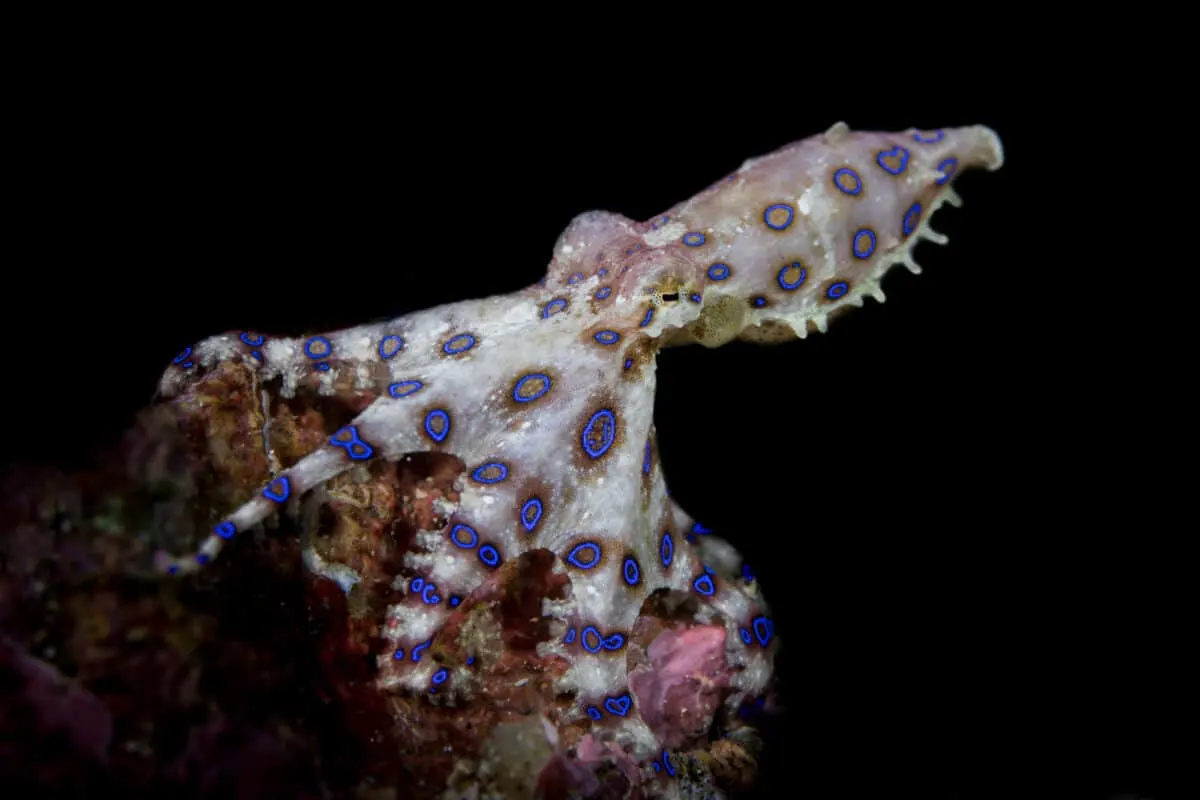This tiny creature, the Blue-Ringed Octopus measuring only a few inches long, packs a powerful punch with its venomous saliva, which can kill a human within minutes.
Without prompt treatment, it can lead to death within hours of the bite. Immediate care should include CPR and artificial respiration until professional medical help arrives.
The Blue-ringed octopus displays its vivid blue and black rings when it feels threatened. The venom is contained in the salivary glands of the octopus and is secreted through its beak when it bites. Interestingly, the Blue-ringed octopus does not produce its venom but obtains it from water bacteria.
Awareness regarding the Blue-ringed octopus and its deadly bite is essential. Despite their lethal abilities, these tiny creatures are fascinating and valuable to the ocean’s diverse ecosystem.
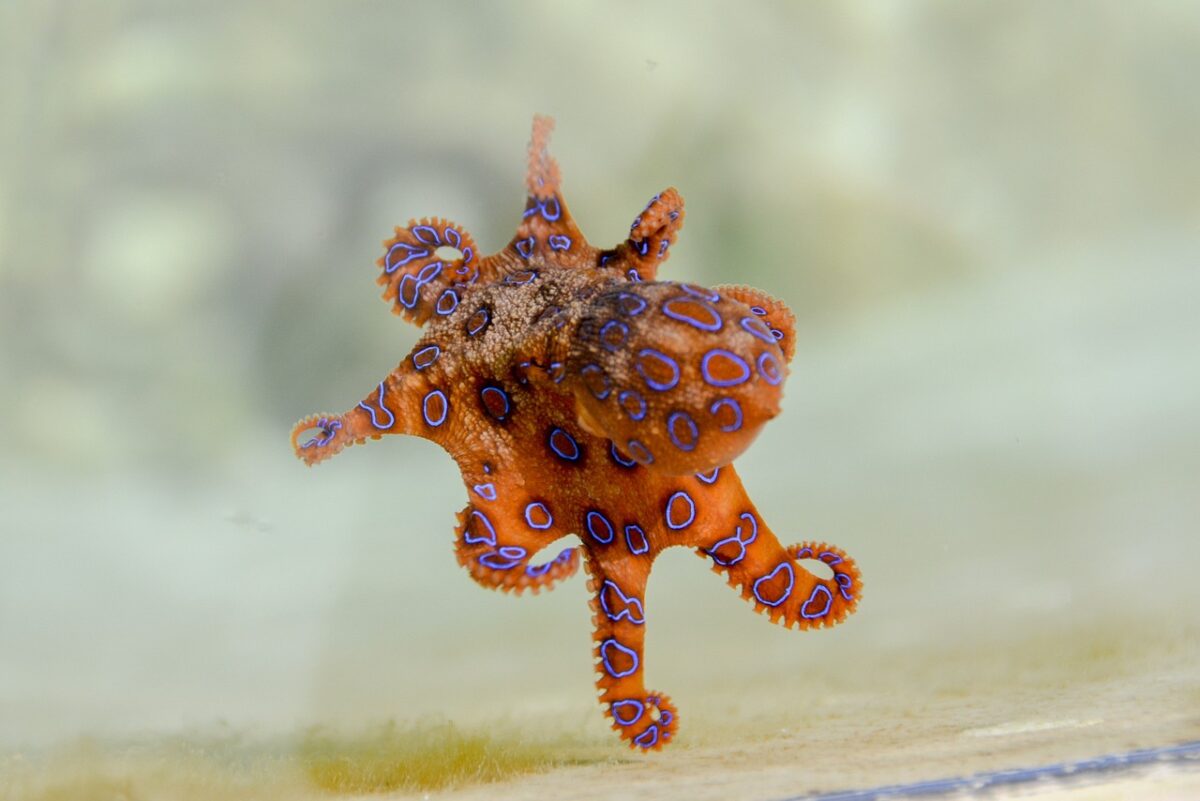
Want to jump ahead? Click below
What is a Blue-Ringed Octopus?
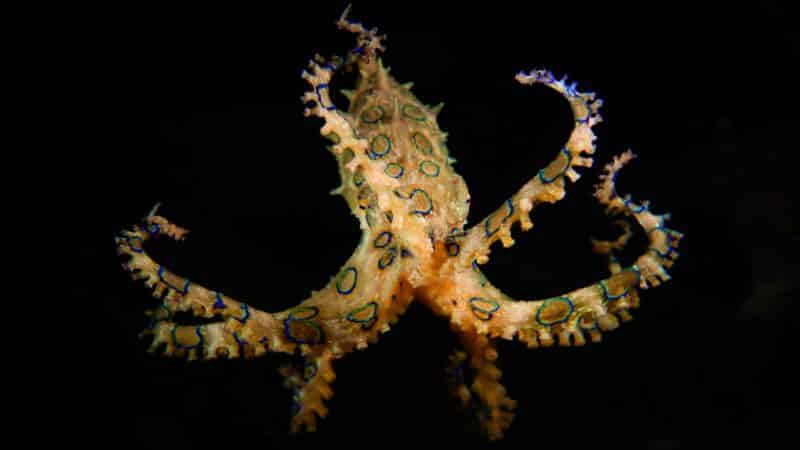
Physical Description
The Blue-ringed octopus, also known as Hapalochlaena, is a small-sized octopus species with an incredibly striking appearance. These octopuses usually range from the size of a golf ball to that of a teacup.
These distinctive species, the Blue-ringed octopuses are easily identified by their unique hue; they have a yellowish body with around 50-60 bright blue rings spread across the body.
Habitat and Distribution
These octopuses are primarily found in the Pacific and Indian Oceans, and their habitat ranges from shallow reefs and tide pools to deeper waters up to 200 feet. Blue-ringed octopuses are primarily found in temperate and tropical regions.
They spend most of their time hiding in crevices or under rocks, camouflaging their appearance to avoid predators.
Diet and Behavior
Blue-ringed octopuses are predatory animals infamous for their nasty solid bite, which contains deadly neurotoxins that can cause paralysis, respiratory arrest, and death. Their diet usually comprises small fish and crustaceans, which they stun with their venomous bite before eating.
Moreover, Blue-ringed octopuses exhibit unique behavior, making them fascinating to study. They are known to be solitary animals and do not interact with other species members except during mating season.
During the breeding season, males wear bright, aggressive displays to attract females. Once a successful mating has occurred, males tend to swim away, and females spend up to four weeks caring for their eggs before they hatch.
Blue-Ringed Octopus Venom
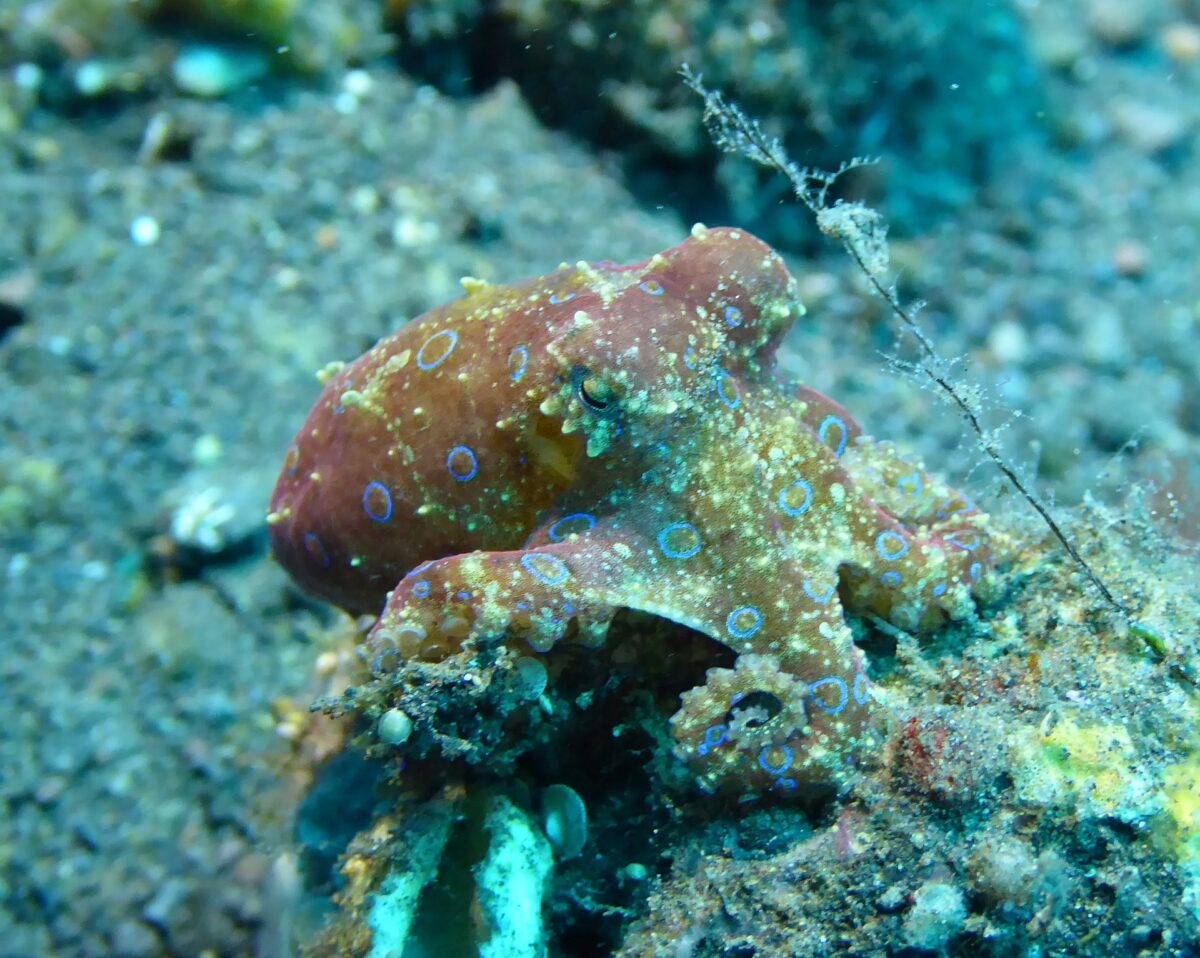
Blue-ringed octopuses are known for their small size and beautiful bright blue rings that adorn their bodies. However, underneath this striking exterior is a venom that is incredibly potent and deadly. The venom of the blue-ringed octopus is considered to be one of the most toxic in the world, with its effects potentially fatal to humans.
Types of Venom
The venom of the blue-ringed octopus contains a combination of several toxins that affect the nervous system. Two types of toxic proteins are found in venom: tetrodotoxin (TTX) and mycotoxin (MTX). Tetrodotoxin is notorious for its ability to block the action of sodium ion channels in nerve cells, leading to paralysis.
Toxicity Level
Even though the blue-ringed octopus is only the size of a golf ball, its venom can pack a deadly punch. The toxin produced by the blue-ringed octopus is so toxic that it can kill a human in just minutes.
How Does the Venom Work on the Victim’s Body?
The poison spreads throughout the body, causing progressive paralysis, respiratory failure, and death. Symptoms of a bite from the blue-ringed octopus can include nausea, vomiting, numbness, and muscular weakness.
Victims may also experience difficulty in breathing, leading to asphyxia and death. Interestingly, the symptoms of the blue-ringed octopus bite can manifest for up to several hours, during which time the victim may not even realize that they have been bitten.
Blue-Ringed Octopus Bite Symptoms
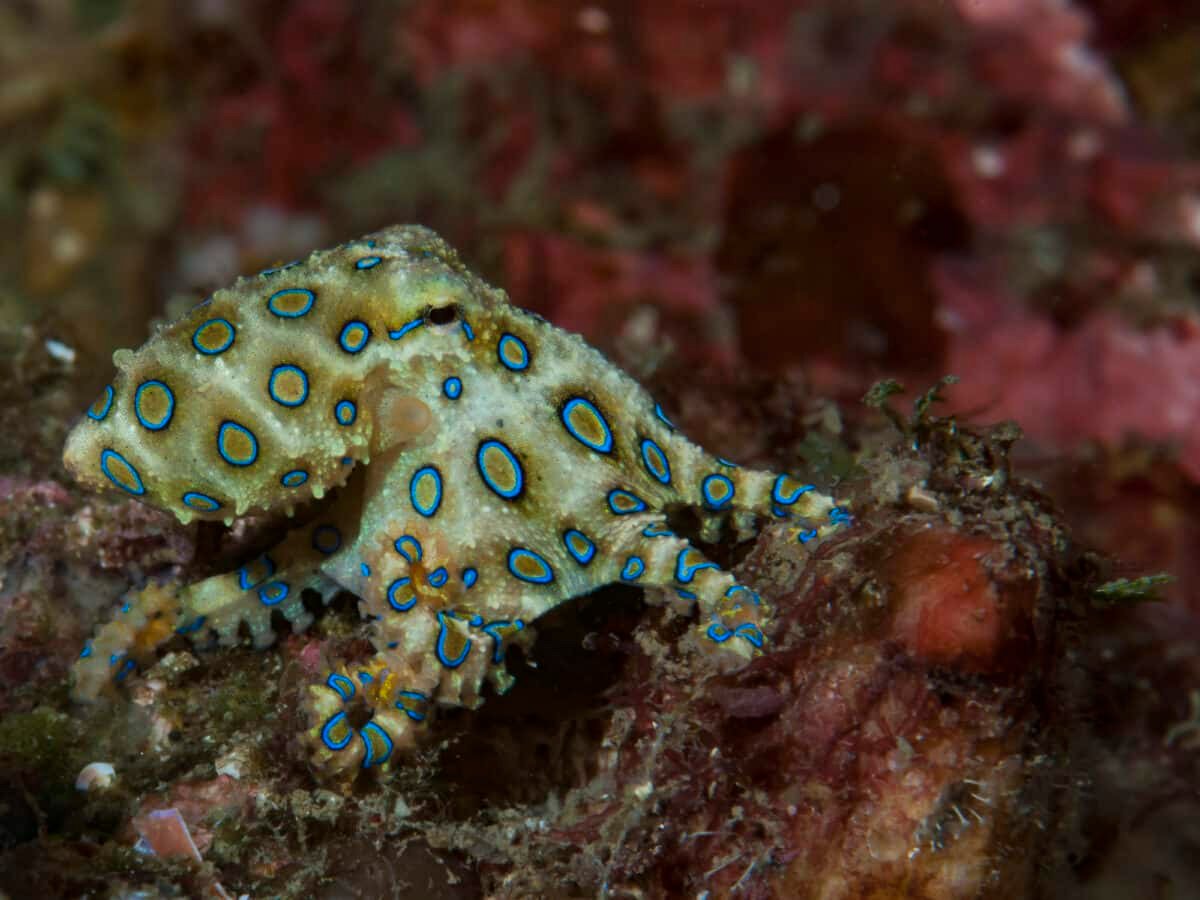
The blue-ringed octopus is widely known for its potent venom, considered one of the most lethal toxins in the world. While its size may be small, this creature can inflict a deadly bite that can lead to paralysis, respiratory arrest, and even death.
Immediate Effects of the Bite
Immediately following a blue-ringed octopus bite, victims may experience a sharp sting, similar to a bee sting. There may also be a visible puncture wound at the site of the edge. However, what sets this bite apart is that there are no immediate symptoms. It can take up to twenty minutes for the symptoms to manifest, nulling the victim into a false sense of security.
Common Symptoms Experienced by Victims
Once the venom begins to take effect, victims typically experience various symptoms, including nausea, dizziness, limb weakness, difficulty breathing, loss of consciousness, and pulmonary edema. These symptoms are generally the result of the neurotoxins found in the venom, which can rapidly affect the nerves and muscles.
Timeframe for the Onset of Symptoms?
The timeframe for the onset of symptoms varies depending on the amount of venom injected and the location of the wound. While some victims may experience symptoms within a few minutes of being bitten, in other cases, it can take up to several hours for the venom to take effect.
Typically, the average timeframe for symptoms to appear is 10 to 30 minutes after a bite. Regardless of the timing, however, medical attention must be sought immediately once a blue-ringed octopus bite has been suspected.
First Aid for Blue-Ringed Octopus Bite
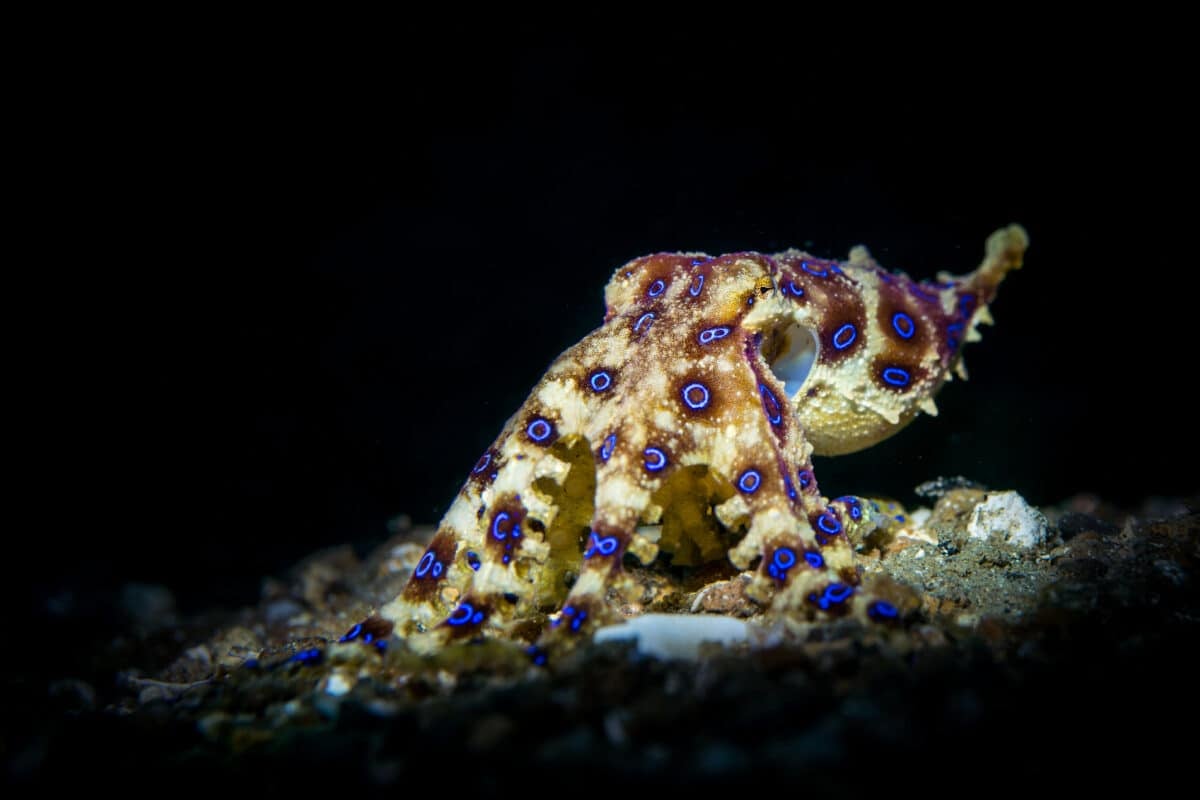
If a blue-ringed octopus bites a person, it is essential to seek medical help immediately. The victim should be taken to the nearest hospital or medical facility immediately.
What to Do Incase of a Blue-Ringed Octopus Bite?
If a blue-ringed octopus bites a person, keeping calm and calling for help immediately is essential. The affected area should be immobilized and kept below the level of the heart. The victim should be kept awake and alert as much as possible. It is also crucial to prevent any further movement of the affected limb.
Common First Aid Practices that Should be Avoided
Several standard first-aid practices should be avoided when treating a blue-ringed octopus bite. For instance, a tourniquet can restrict blood flow to the affected area, causing tissue death and increasing the risk of infection. Keeping the victim calm and observing them closely until medical help arrives is essential.
How to Avoid Getting Stung by a Blue-Ringed Octopus
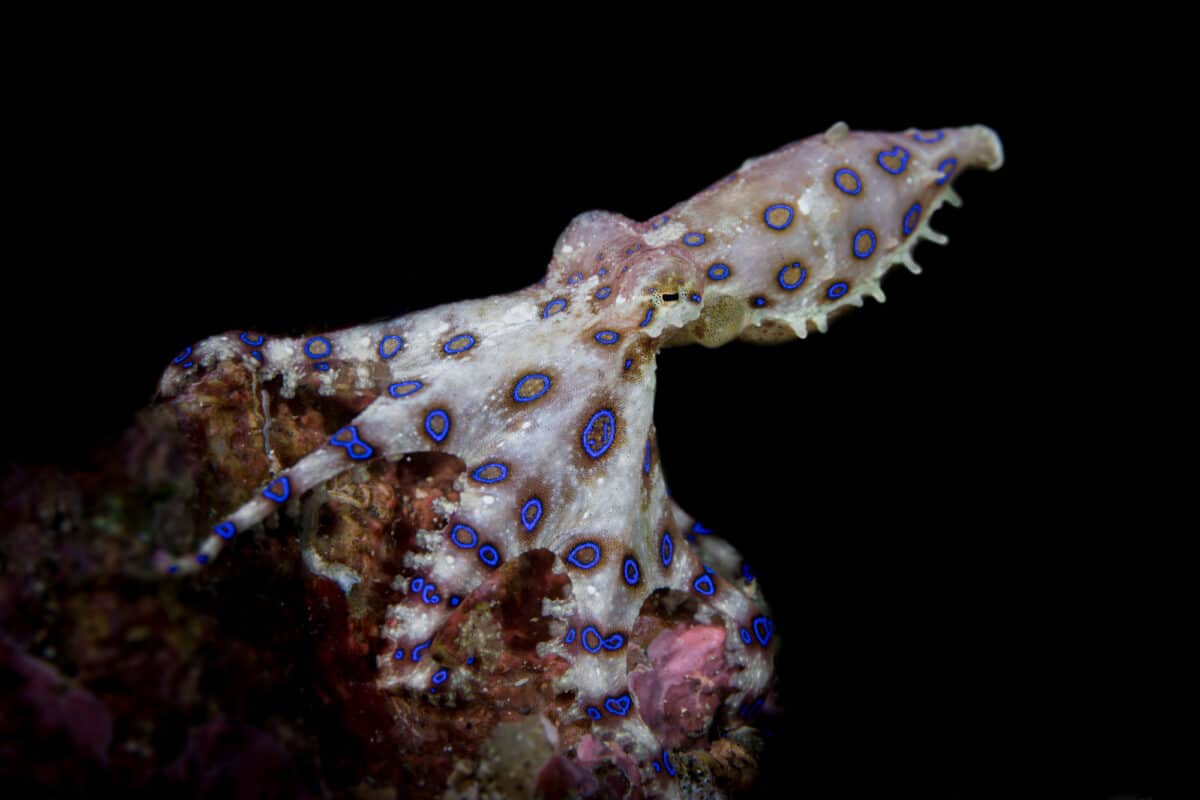
- Stay away from Blue-ringed octopuses
Avoiding the animal altogether is the best and most effective way to prevent a Blue-ringed octopus bite. These creatures are generally shy and usually avoid human contact, so try not to disturb them if you see one.
- Wear protective clothing
If you’re going into the water or walking along the shoreline, it’s essential to wear protective clothing like a wetsuit or long pants and sleeves. This can provide a barrier between your skin and the octopus venom.
- Be cautious of hiding spots
Blue-ringed octopuses like to hide in small crevices and cracks, so be cautious when reaching into these spaces. Always check before placing your hands in any tight spots.
Key Points
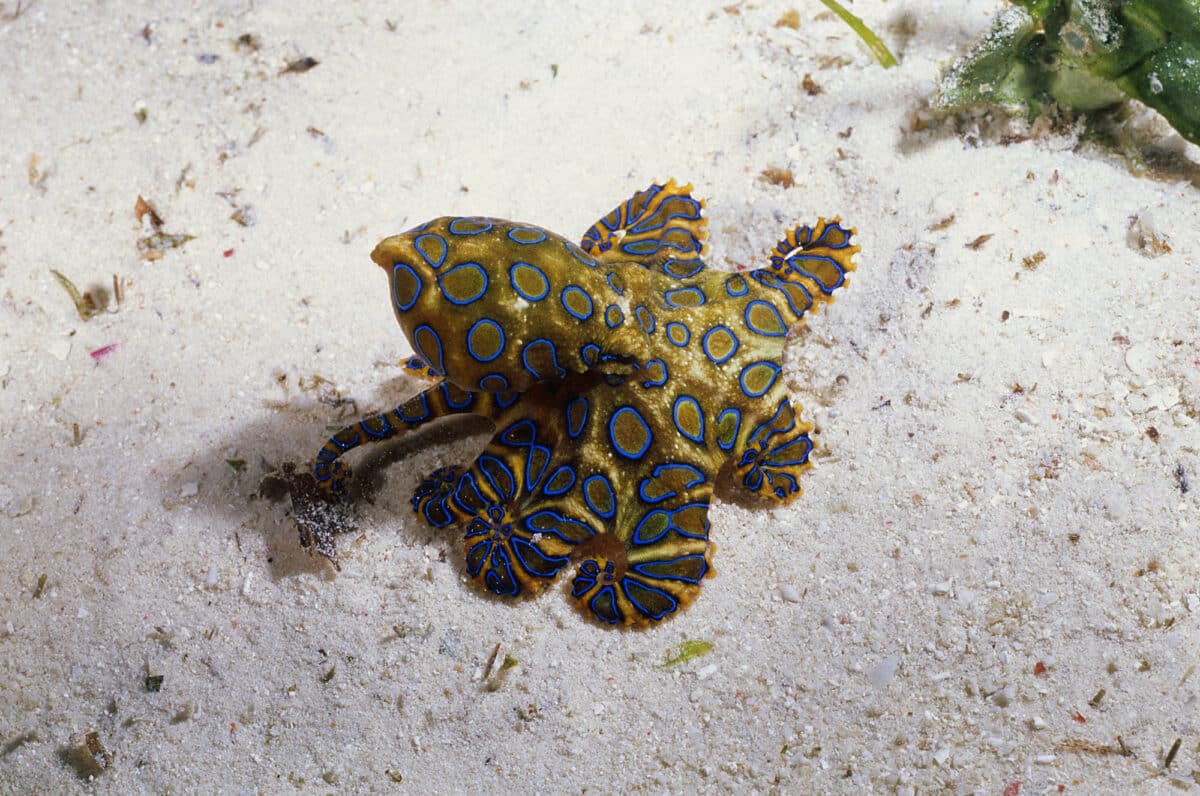
| A Blue-ringed octopus bite can be fatal, and knowing how to recognize the symptoms is essential to receive immediate medical attention. |
| The Blue-ringed octopus displays its vivid blue and black rings when it feels threatened. |
| The venom is contained in the salivary glands of the octopus and is secreted through its beak when it bites. |
| These octopuses usually range from the size of a golf ball to that of a teacup. |
| It can take up to twenty minutes for the symptoms to manifest, nulling the victim into a false sense of security. |
Wrapping Up with the Dangers of the Blue-Ringed Octopus
In conclusion, it is essential to take precautions to avoid the potentially deadly effects of a Blue-ringed octopus bite. You can significantly reduce the risk of getting stung by avoiding these creatures, wearing protective clothing, and being cautious of hiding spots.
Additionally, if you encounter a Blue-ringed octopus, following the steps to minimize the venom’s harmful effects is essential. Spreading awareness about the dangers associated with these creatures is also crucial to ensure that people know how to stay safe in their natural habitats.
Thanks for following along with me! I hope you enjoyed reading about these two exciting animals. Next is Discover the Fastest Peregrine Falcon Dive Speed on Record, Witness the Longest Blue Whale Ever Measured, and Biggest flock of migrating birds ever recorded.
- Bald Eagle Family Expand Their Nest In California - April 24, 2024
- Firefighter Saves Abandoned Kittens Found Cuddling In Hoses - April 24, 2024
- Dolphins Get High Playing Catch With A Pufferfish - April 24, 2024

